Off the Rails in Khao Yai
23 January 2024
If I mentioned a land of rolling hills, cypress trees, vineyards, lakes and little roadside pizzerias, you might reasonably assume I was talking about Tuscany, and wonder why a Southeast Asia travel blog was featuring Italy. But I’m actually describing Thailand’s Khao Yai region, an area little known to visitors but beloved by Bangkokians.
Situated around three hours’ drive northeast of Bangkok, halfway between the capital and the Isaan city of Nakhon Ratchasima, Khao Yai is a lush, rural region boasting beautiful scenery, abundant wildlife, and plenty of upscale places to eat and sleep. Its proximity to Bangkok, and its fresh air and slightly cooler climate, make it a popular weekend escape and second home destination for city dwellers, and it’s best imagined as a cross between Tuscany and The Hamptons. Foreign tourists are few and far between, making it the perfect getaway for anyone wanting to avoid the crowds whilst getting in some quality R&R and coming home with a few unique bragging rights.
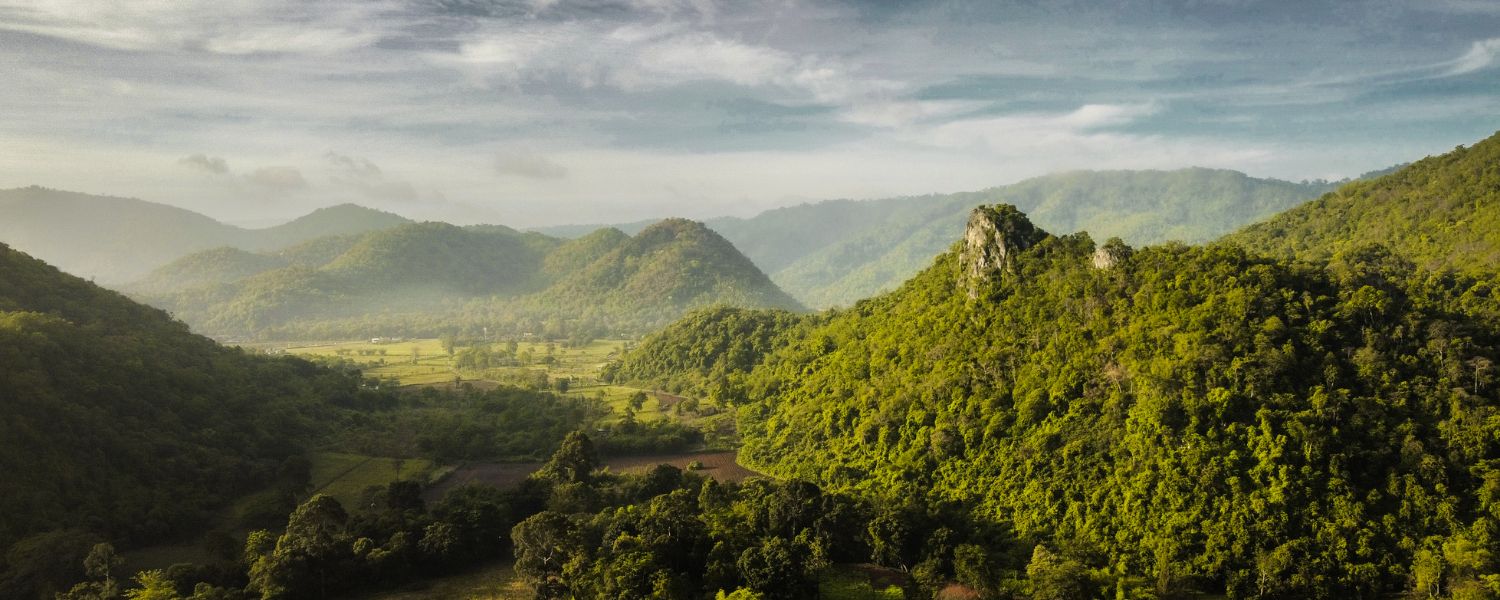
Railway Sleepers
When it comes to places to sleep, as far as we’re concerned there’s only one choice – the Intercontinental Khao Yai, an extraordinary Bill Bensley-designed resort on the edge of the national park.
In Werner Herzog’s classic 1982 film Fitzcarraldo, the titular character has the crazy dream of transporting a 320-ton steamship up a mountain in the Amazon jungle, and this story sprang immediately to mind when I heard the resort’s back story. The resort owners travelled around Thailand sourcing disused railway carriages, which were transported to the jungles of Khao Yai on the backs of trucks and refurbished to Bensley’s flamboyant and exacting standards. Fitzcarraldo himself didn’t succeed with his grand folly, but Bensley and team most definitely did.
My room for the night is a stunning Heritage Railcar Pool Villa, an entire rail carriage with an outdoor deck featuring a private plunge pool and beautiful views over the resort’s own lake. If it’s initially disorientating to find yourself in a rail carriage in the middle of the jungle, the ornate decorations (every carriage is different and all contain antiques sourced from all over the country) and luxury touches such as complimentary minibar, high end toiletries, and espresso machine soon make you feel very much at home.
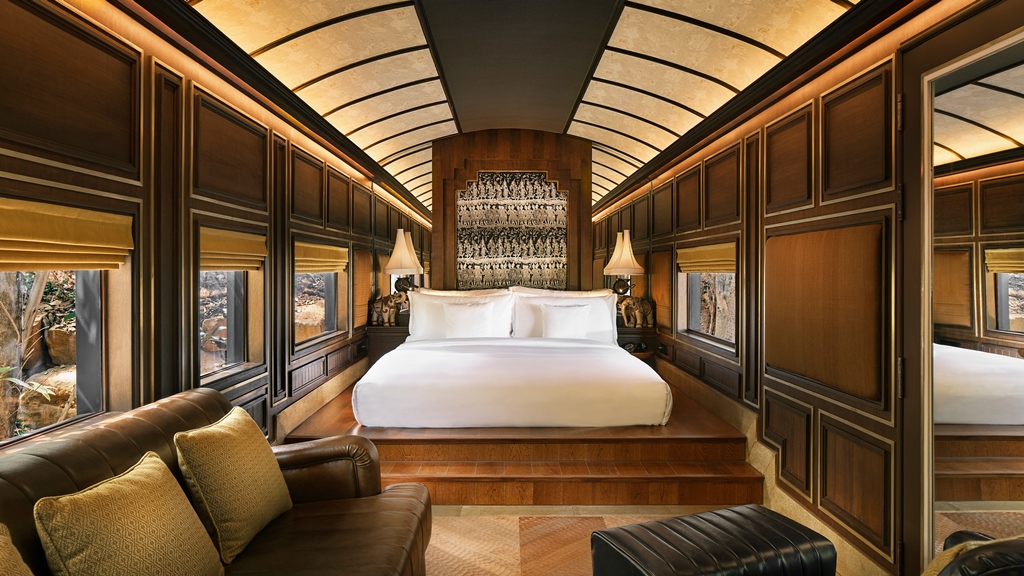
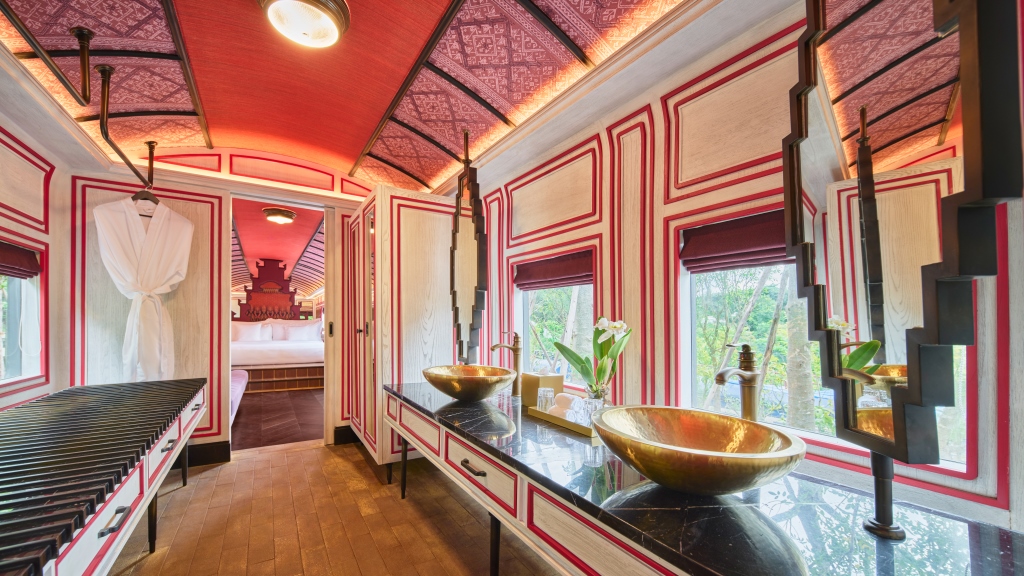
The rail theme continues when it comes to eating and drinking. Papillon Bar turns another rail carriage into a dimly-lit speakeasy – think hushed conversations over innovative cocktails to a soundtrack that will delight serious jazz freaks; whilst Poirot, situated in the adjacent carriage, serves up French fine dining. We ate on the restaurant deck overlooking the lake and the ambience was like nothing else I’ve experienced in Thailand.
The resort is its own self-contained little world, set in beautifully landscaped gardens, and a morning cycle ride around Swan Lake (and yes there are lots of swans as well as beautiful Koi carp) is a great start to the day before breakfast and local coffee at Somying’s Kitchen. There’s also a kids’ club for the little ones, a spa with all the usual services, a gym, and, for afternoon tea, the delightful Tea Carriage, a railcar-turned-teahouse overlooking the smaller of the resort’s two lakes.
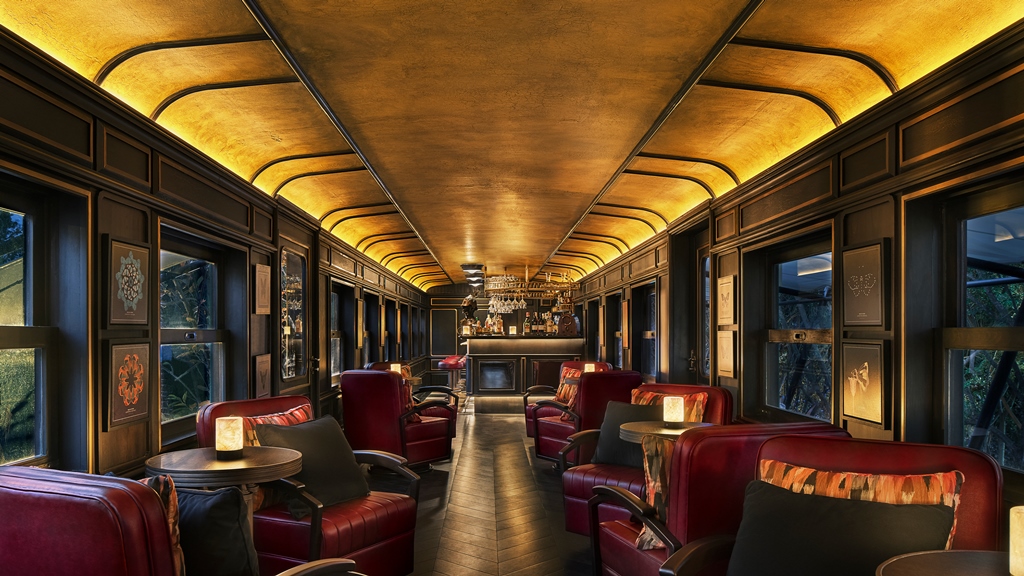
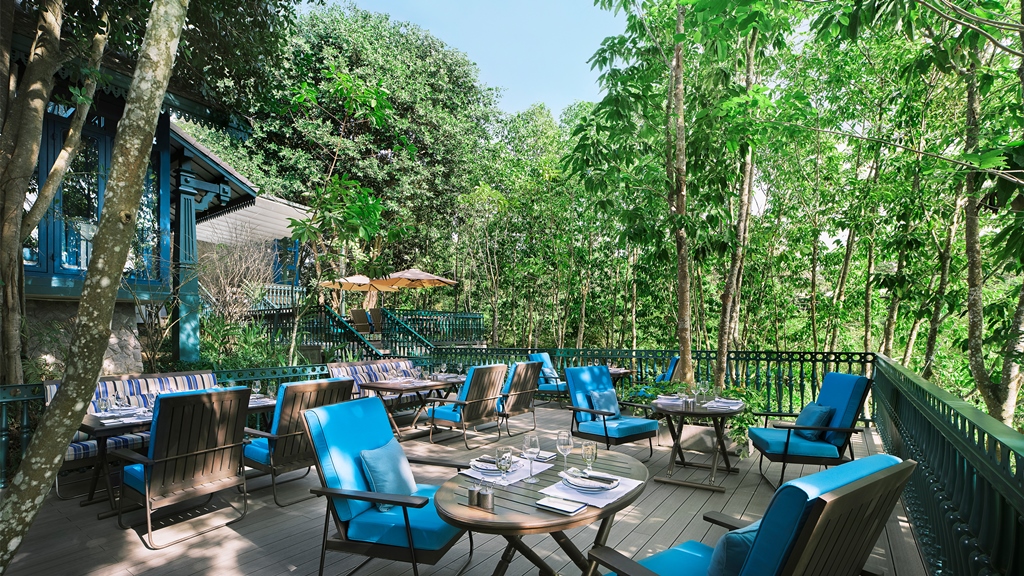
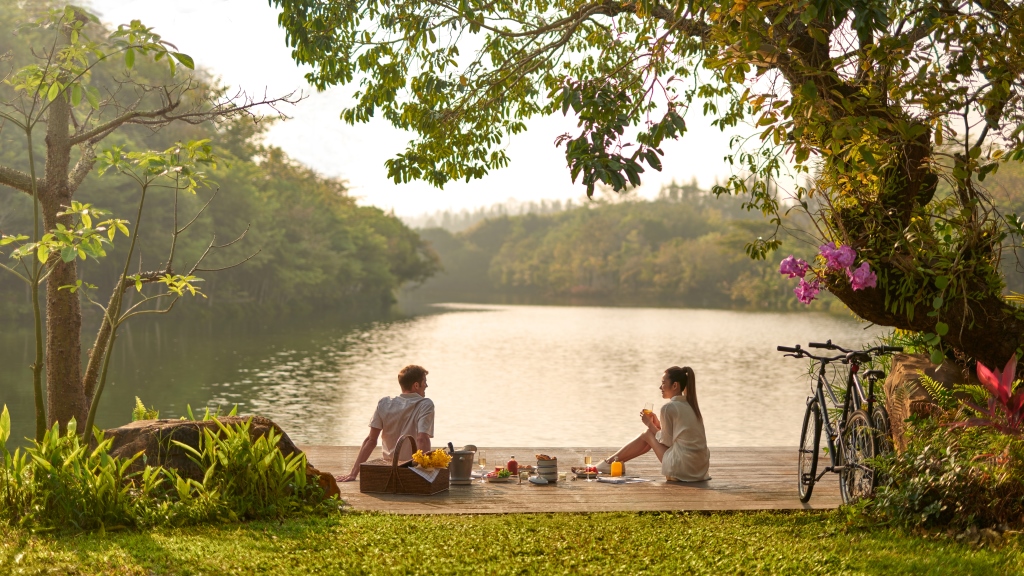
Beyond the Resort
For many guests, the resort’s stunning environment, peaceful atmosphere and range of activities will make it difficult to leave. However, for those who want to get out and explore Khao Yai, there is plenty to see and do beyond the resort’s gates.
Wild Wild Life
Khao Yai is Thailand’s third biggest national park, with an area of over 2000km2. It was also Thailand’s first ever national park, having been registered as far back as 1962. As such it has a special place in the hearts of Thais, especially Bangkokians for whom the park is the nearest patch of nature to the big city.
It’s also one of the best places in the whole of Thailand to see rare wildlife. The park is most famous for its elephant population – these magnificent beasts are quite shy and you’re not guaranteed a sighting, but visit the park with a ranger and they’ll know the best spots. The park is also home to other species such as the barking deer, variable squirrel, black giant squirrel, white-handed gibbon, and gliding lizard, as well as various tropical birds including great hornbills, puff-throated bulbuls, and racket-tailed drongos. There are several bat caves where you can enjoy the spectacular sight of thousands of bats leaving the caves at dusk. The park is also a popular place for herping (snake spotting), being home to king cobras, pit vipers, reticulated pythons, and more. Watch your step…
You may spot some wildlife from the main road that runs through the park, but to really make sure you spot some of the park’s fauna, you need to trek through the jungle with a local ranger. They know all the paths and the best places to spot the local critters.
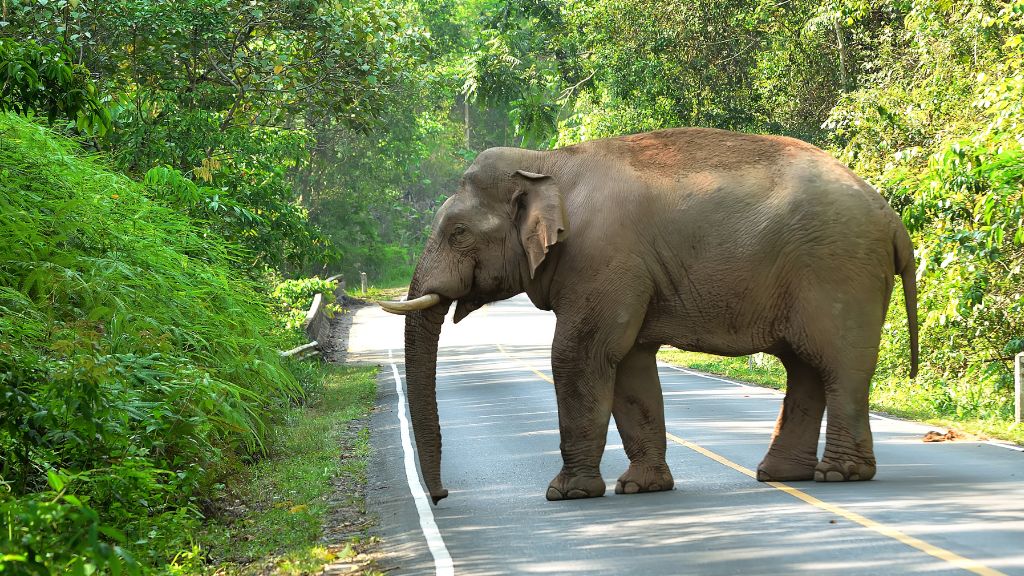
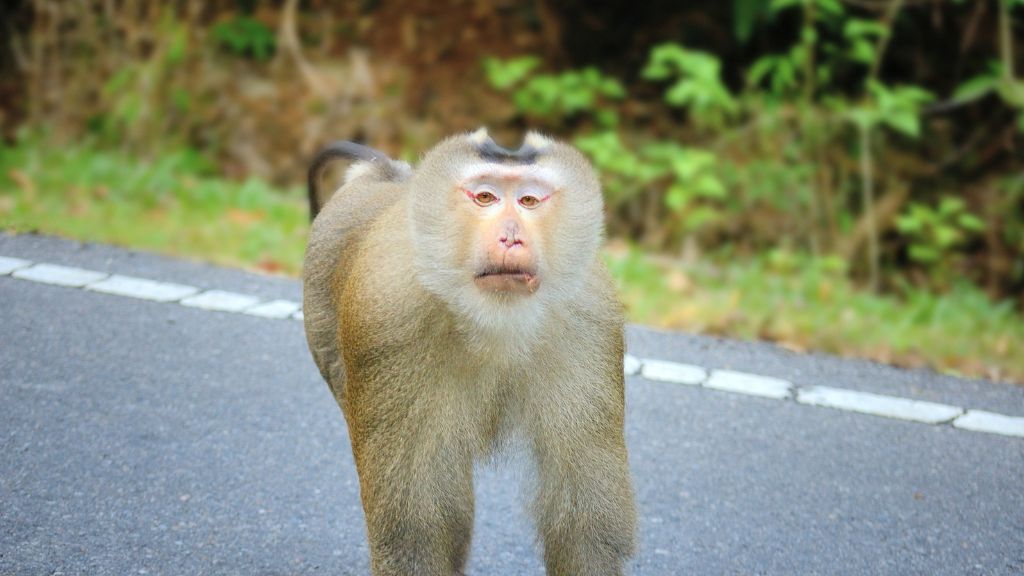
Escape to Wang Nam Khiao – Wildlife Conservation in Action
Go Chasing Waterfalls
Even if the wildlife decides not to put in an appearance, the park is a spectacular attraction in itself. It boasts several beautiful waterfalls, notably the 80-metre Haew Narok and the famous Haew Suwat, which was one of the locations for the 1999 movie The Beach. Visiting the falls involves short hikes through the jungle making it a great little adventure.
There are also several viewpoints from which more intrepid hikers can enjoy views over the whole park, in particular Yod Khao Khieo Mountain, the region’s highest point, which also offers several hiking trails of varying difficulty.
So Much Wine
Thailand’s wine industry is little known outside the kingdom, but Khao Yai’s terroir and climate make it the country’s premier wine-producing area. Names such as Granmonte and PB Valley are locally famous for their wines and, whilst they won’t be challenging Australia or South Africa as famous New World wine exports any time soon, the wines are very quaffable.
Visitors to Granmonte can tour the vineyard and find out more about the wine producing process as well as Thailand’s wine industry in general, finishing – of course – with a tasting. The vineyard is also home to the stunning Vincotto restaurant, which offers excellent western food to accompany the wines.
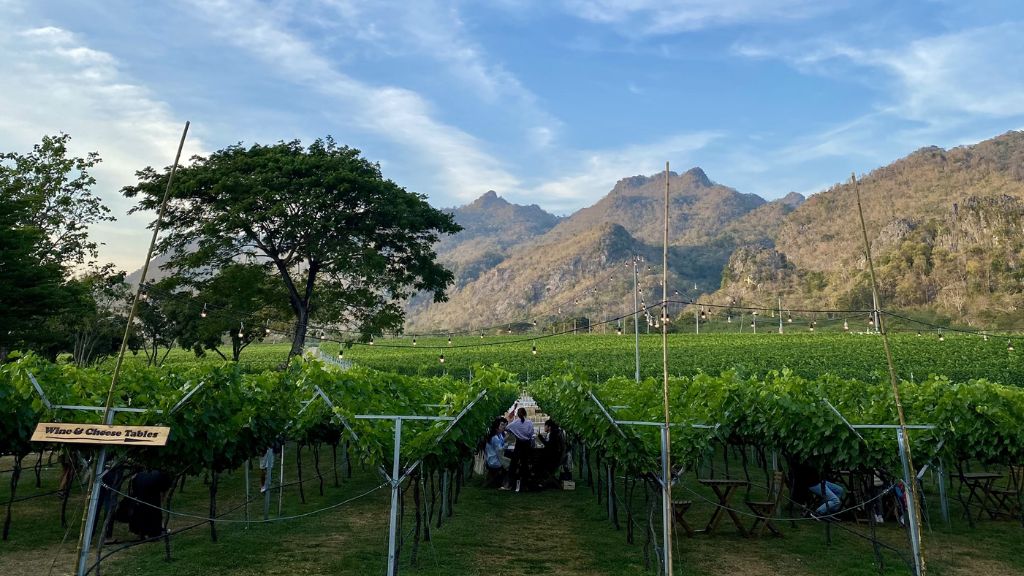
Khao Yai Kitsch
Popular Southeast Asian tourist destinations are not always known for their refined sense of taste and aesthetics, and lovers of everything OTT and kitsch will delight in a couple of Khao Yai’s best known attractions.
Only opened in 2019, Luang Pu Thuat has quickly become one of the area’s best-known landmarks. A 111-metre high gold statue of Luang Pu Thuat himself (a famous 16th-century Thai monk believed to have performed miracles) located in a large park with ornamental gardens, it’s a mecca for local tourists who come here to make merit, shop for souvenirs and Thai snacks, and pose for Instagram photos. It’s a textbook example of commercialised Buddhism and a must for getting an insight into how the locals travel, and worship; it also has to be said that the statue itself is undeniably impressive.
As we mentioned at the start of this post, Khao Yai is often compared to the Italian region of Tuscany, and one resort has taken that similarity to a new level. Toscana Valley is a hotel, restaurant and entertainment complex built to resemble an Italian village, right down to the imported cypress trees. It looks extremely realistic from a distance (there’s even a mock Leaning Tower of Pisa); close-up it’s not quite as authentic. However it does have considerable kitsch value, as well as an excellent Italian restaurant and wine bar. And fans of cult 1960s TV show The Prisoner will get the feeling of being transported to ‘The Village’!
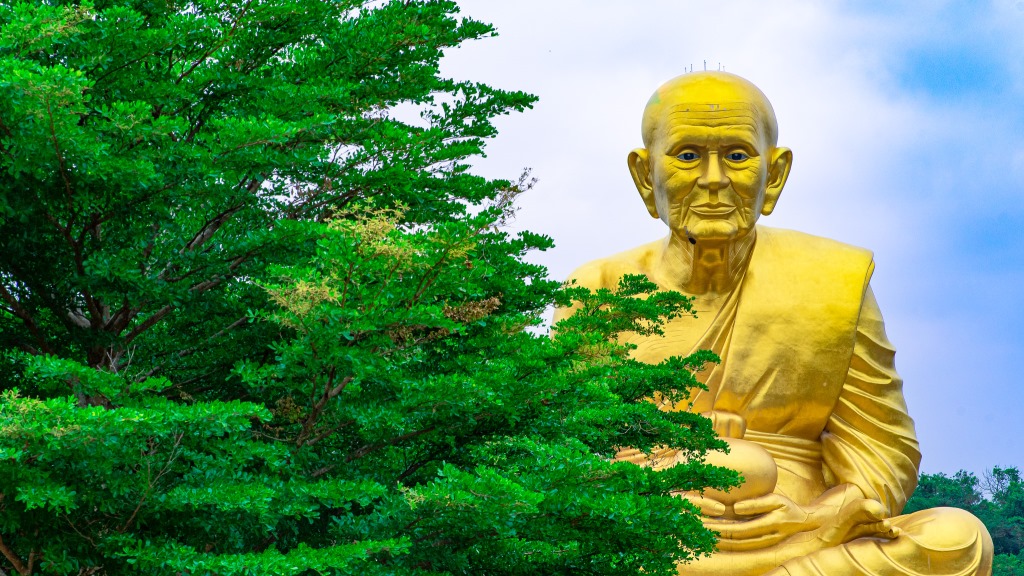
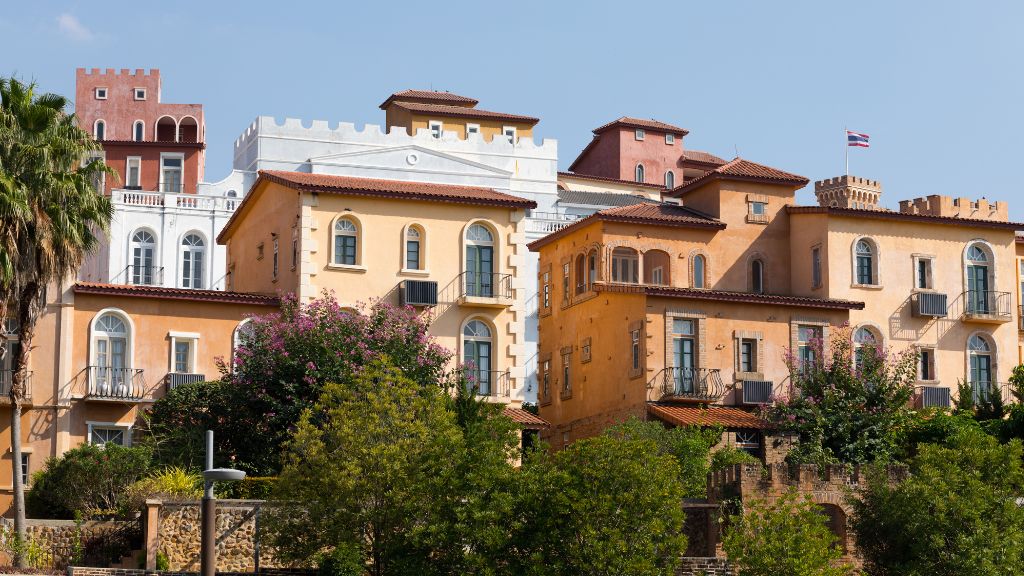
With a new highway opening in the next couple of years likely to reduce the journey time from Bangkok to around 90 minutes, as well as some more luxury resort openings, international travellers will soon be learning what Bangkokians have known for years – that Khao Yai is one of Thailand’s best kept secrets and the ideal location for a short – and fascinating – escape from the city. And at Smiling Albino, we have the contacts and insider knowledge to take you deeper into this underrated region.
